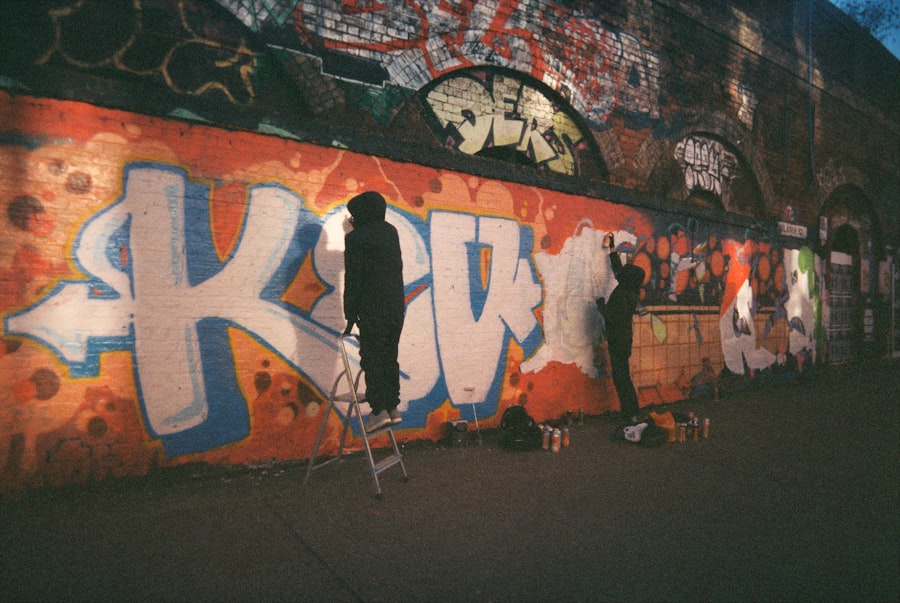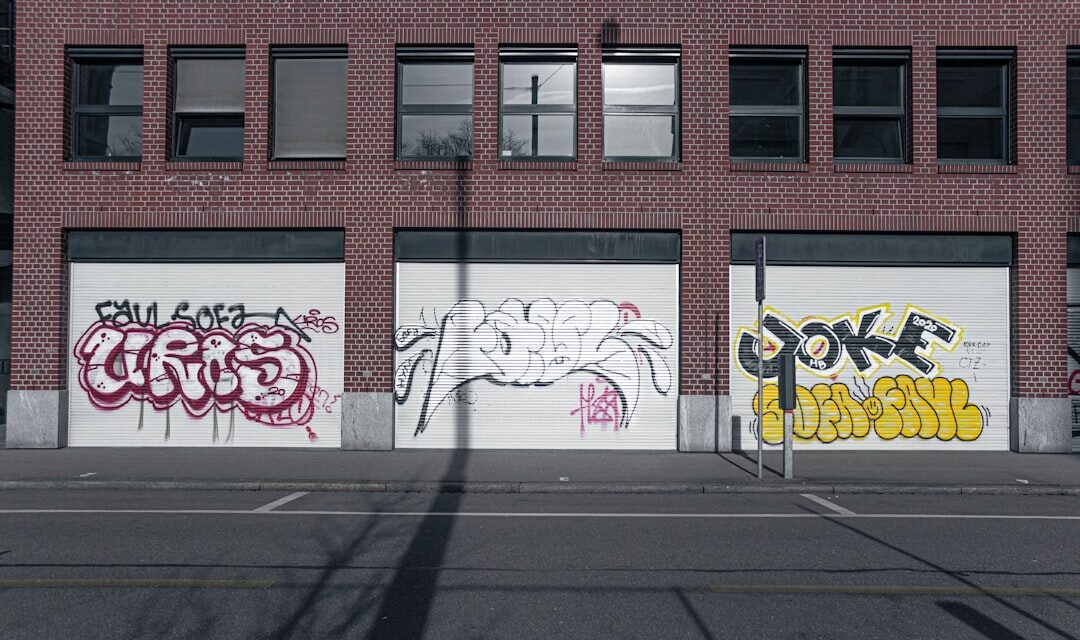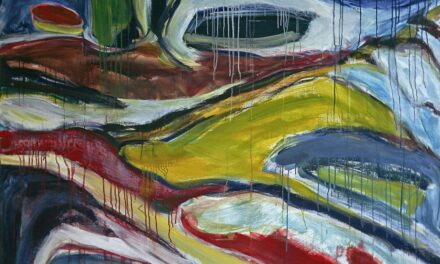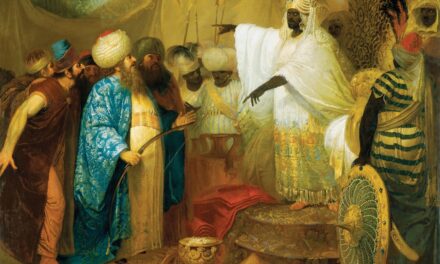Jean-Michel Basquiat was born on 22 December 1960 in Brooklyn, New York. He was the second of four children born to Matilde Andrades, a Puerto Rican woman, and Gérard Basquiat, a Haitian immigrant. His early life was marked by adversity, as his mother was institutionalised when he was just seven years old, and his parents’ tumultuous relationship eventually led to their separation.
Basquiat’s mother’s mental illness had a significant impact on him and would later influence his artwork. Despite the challenges he faced, Basquiat demonstrated an early aptitude for art and began creating drawings and paintings from a young age. He attended City-As-School, an alternative secondary school in Manhattan, where he met Al Diaz, with whom he would later form the graffiti duo SAMO©.
Basquiat’s upbringing in Brooklyn exposed him to the vibrant street art and hip-hop culture that would later influence his artistic style. His early experiences with racism and social inequality also played a significant role in shaping his worldview and artistic expression. These formative years laid the foundation for Basquiat’s unique artistic vision, which would later propel him to prominence and success in the art world.
Summary
- Basquiat was born in Brooklyn, New York in 1960 to a Haitian father and Puerto Rican mother, and his early life was marked by a turbulent family environment and struggles with his identity.
- Basquiat rose to fame in the 1980s as a graffiti artist in New York City, and his artistic style was characterised by a raw, expressive energy and a mix of street art, poetry, and social commentary.
- Basquiat’s collaboration with Andy Warhol in the mid-1980s resulted in a series of successful joint exhibitions and a close friendship that had a significant impact on both artists’ work.
- Basquiat’s influence on contemporary art is evident in his exploration of race, identity, and social issues, as well as his use of symbols, text, and abstraction, which continue to inspire artists today.
- Basquiat tragically died of a heroin overdose in 1988 at the age of 27, but his legacy lives on through his powerful and influential body of work that continues to be celebrated in retrospectives and exhibitions around the world.
- Basquiat’s impact on popular culture is far-reaching, with his art being featured in films, music, fashion, and literature, and his iconic status as a symbol of creativity, rebellion, and artistic genius.
Rise to Fame and Artistic Style
Basquiat’s rise to fame was meteoric, and he quickly became a prominent figure in the New York art scene of the 1980s. His distinctive artistic style combined elements of graffiti, street art, and neo-expressionism, and his work often featured bold, vibrant colours and powerful, emotive imagery. Basquiat’s paintings were characterised by their raw energy and emotional intensity, and he often incorporated text and symbols into his compositions.
His use of words and phrases, often crossed out or repeated, added layers of meaning to his work and reflected his interest in language and communication. Basquiat’s art was deeply influenced by his experiences as a young black man in America, and he frequently explored themes of race, identity, and social injustice in his work. His paintings often featured references to African-American history and culture, as well as critiques of the art world and consumer society.
Basquiat’s unique blend of personal expression and social commentary resonated with audiences and critics alike, and he quickly gained a reputation as a visionary artist with a powerful voice.
Collaboration with Andy Warhol

One of the most significant partnerships in Basquiat’s career was his collaboration with the legendary pop artist Andy Warhol. The two artists first met in 1982 and quickly formed a close friendship that would lead to a series of collaborative works. Their partnership was groundbreaking, as it brought together two distinct artistic styles and generations, bridging the gap between street art and pop art.
The collaboration resulted in a series of paintings that combined Warhol’s iconic imagery with Basquiat’s bold, expressive marks, creating a dynamic fusion of styles. The collaboration with Warhol not only elevated Basquiat’s profile in the art world but also provided him with mentorship and guidance from an established figure. Their joint exhibitions received widespread acclaim and solidified Basquiat’s status as a leading figure in contemporary art.
The partnership with Warhol was tragically cut short by Warhol’s untimely death in 1987, but their collaborative works continue to be celebrated as a testament to the power of artistic collaboration.
Influence on Contemporary Art
Basquiat’s impact on contemporary art is profound and far-reaching. His work has inspired countless artists across various mediums and continues to resonate with audiences around the world. His fearless approach to addressing social and political issues through art has paved the way for a new generation of artists who use their work to challenge the status quo and advocate for change.
Basquiat’s influence can be seen in the work of street artists, graffiti writers, and neo-expressionist painters who continue to push boundaries and defy traditional artistic conventions. Furthermore, Basquiat’s legacy extends beyond the art world, as his impact can be felt in fashion, music, and popular culture. His iconic imagery has been embraced by designers, musicians, and filmmakers who have drawn inspiration from his art and life.
Basquiat’s ability to capture the zeitgeist of his time continues to resonate with contemporary audiences, making him a timeless figure whose influence transcends generations.
Tragic Death and Legacy
Tragically, Basquiat’s life was cut short when he passed away on August 12, 1988, at the young age of 27. His untimely death sent shockwaves through the art world and left a void that could never be filled. Basquiat’s passing was a devastating loss for the artistic community, as it robbed the world of a visionary talent who had so much more to offer.
Despite his premature death, Basquiat’s legacy endures, and his impact on the art world continues to be felt today. His work remains highly sought after by collectors and museums, and his influence on contemporary art is as strong as ever. Basquiat’s tragic death only served to cement his status as a legendary figure whose artistic vision transcends time.
Retrospectives and Exhibitions

In the years following his death, Basquiat’s work has been celebrated through numerous retrospectives and exhibitions around the world. These exhibitions have provided audiences with an opportunity to experience the depth and breadth of Basquiat’s artistic output and have helped to cement his legacy as one of the most important artists of the 20th century. Major museums such as the Whitney Museum of American Art in New York City and the Museum of Contemporary Art in Los Angeles have hosted comprehensive retrospectives of Basquiat’s work, showcasing his paintings, drawings, and mixed-media pieces.
These exhibitions have not only introduced Basquiat’s art to new audiences but have also provided a platform for critical analysis and scholarly research into his life and work.
Basquiat’s Impact on Popular Culture
Basquiat’s impact on popular culture is undeniable, as his influence can be seen across various facets of contemporary society. His iconic imagery has been embraced by fashion designers who have incorporated his artwork into their collections, while musicians have paid homage to him through song lyrics and album artwork. Additionally, filmmakers have explored Basquiat’s life and legacy through documentaries and biopics that seek to capture the essence of his artistic genius.
Furthermore, Basquiat’s impact on popular culture extends to social activism, as his work continues to inspire individuals who seek to challenge societal norms and advocate for change. His fearless approach to addressing issues of race, identity, and inequality has resonated with activists who see his art as a powerful tool for social justice. In conclusion, Jean-Michel Basquiat’s life and work have left an indelible mark on the art world and popular culture.
His unique artistic vision continues to inspire artists and audiences alike, while his fearless approach to addressing social issues has made him a timeless figure whose influence transcends generations. Despite his tragic death at a young age, Basquiat’s legacy endures, ensuring that his impact on contemporary art will be felt for years to come.
If you are interested in learning more about the art movements that influenced Jean-Michel Basquiat’s work, you may want to check out the article on post-impressionism on Thinkofart.com. Post-impressionism was a movement that emerged in the late 19th century and had a significant impact on the development of modern art. By clicking on https://thinkofart.com/post-impressionism/, you can explore the key characteristics and artists associated with this influential artistic movement. Understanding the context in which Basquiat’s work emerged can provide valuable insights into his unique artistic vision.
FAQs
Who is Jean-Michel Basquiat?
Jean-Michel Basquiat was an American artist who rose to fame in the 1980s for his graffiti-influenced paintings. He was known for his raw, expressive style and his exploration of social and political themes.
What is Jean-Michel Basquiat known for?
Basquiat is known for his unique blend of graffiti, street art, and fine art. His work often featured bold, gestural lines, vibrant colours, and a mix of text and imagery. He also addressed issues of race, identity, and social justice in his art.
What was Jean-Michel Basquiat’s background?
Basquiat was born in Brooklyn, New York, in 1960. He began as a graffiti artist under the pseudonym “SAMO” before transitioning to a career as a painter. He tragically passed away in 1988 at the age of 27.
What is the significance of Jean-Michel Basquiat’s art?
Basquiat’s art is significant for its influence on the contemporary art world and its exploration of important social and political issues. His work continues to inspire and provoke thought in the art community and beyond.
Where can I see Jean-Michel Basquiat’s art?
Basquiat’s art can be found in major museums and galleries around the world, including the Museum of Modern Art in New York, the Broad in Los Angeles, and the Tate Modern in London. His work is also frequently featured in special exhibitions and retrospectives.




